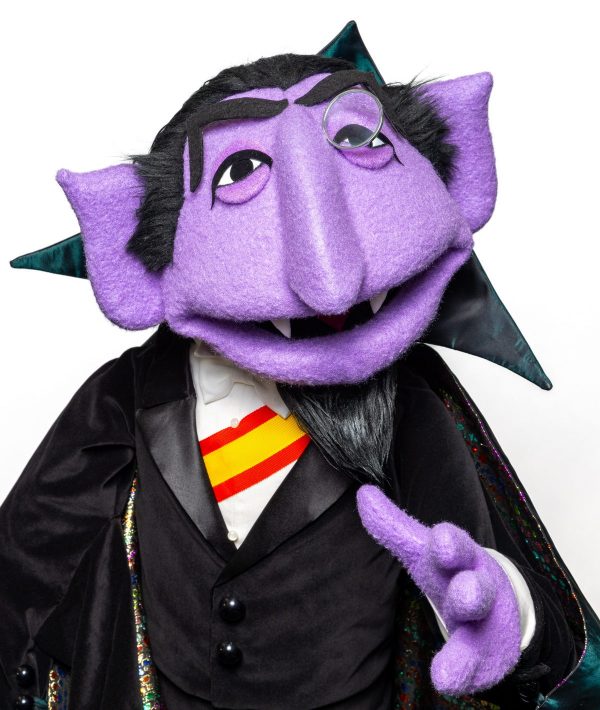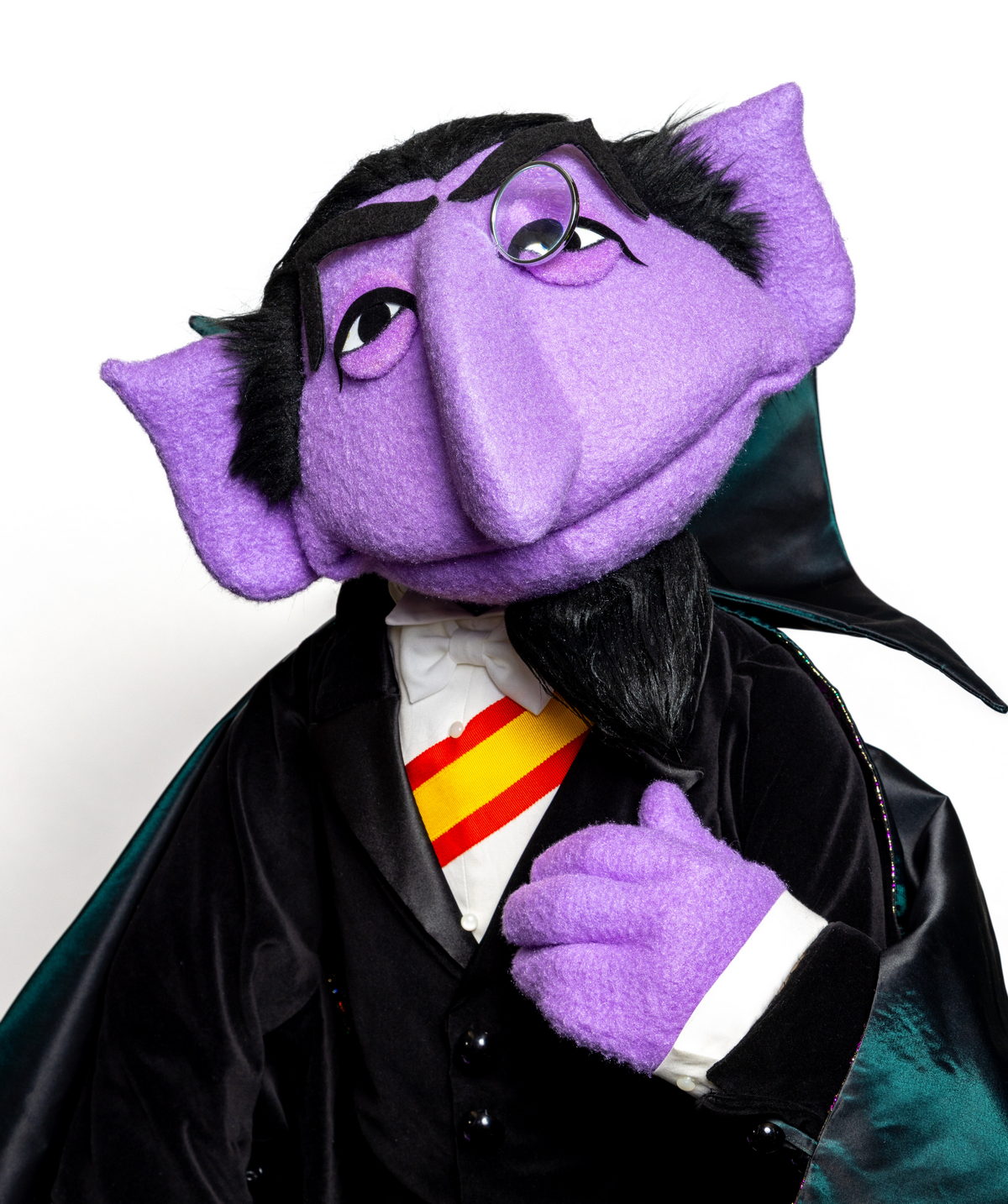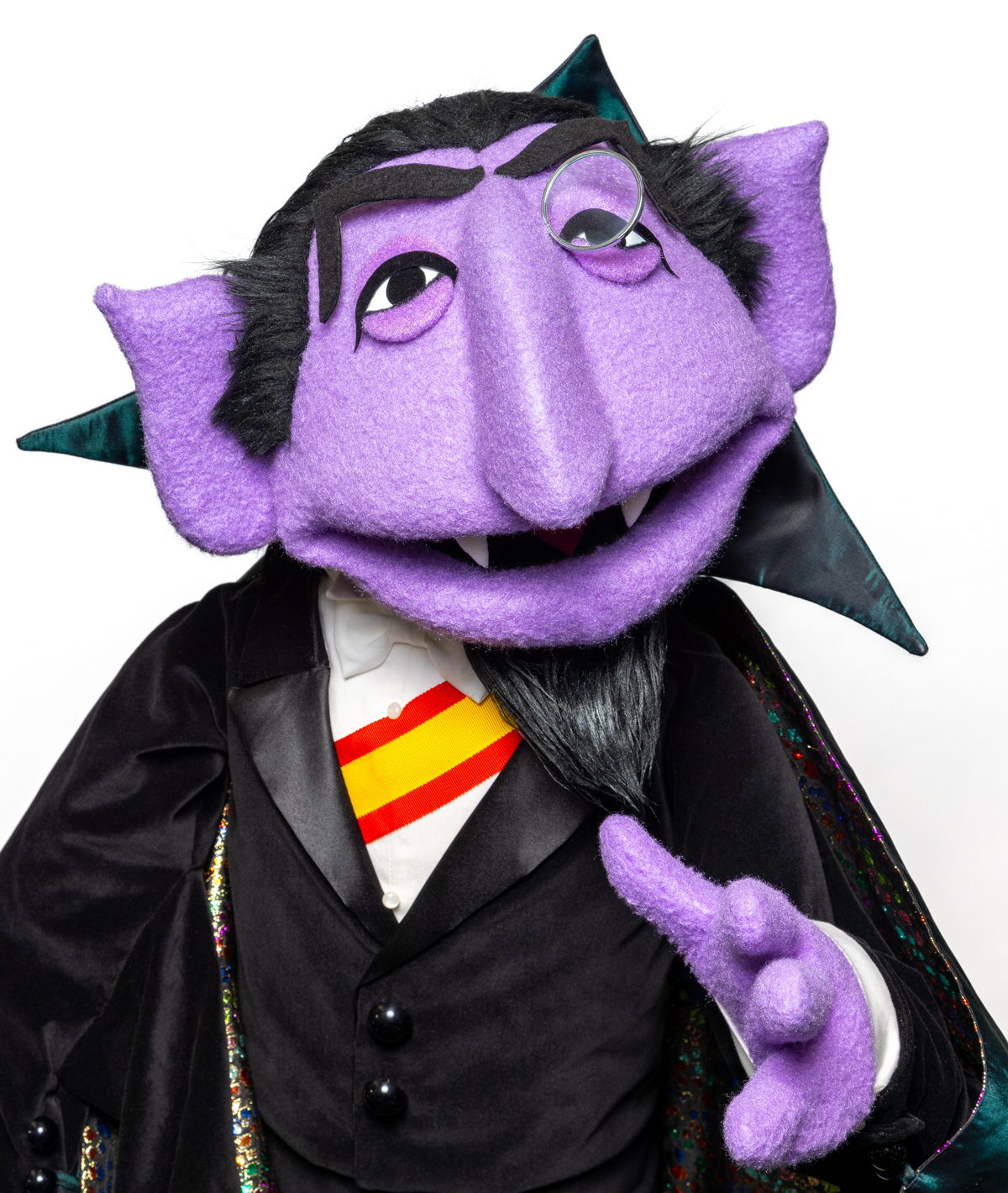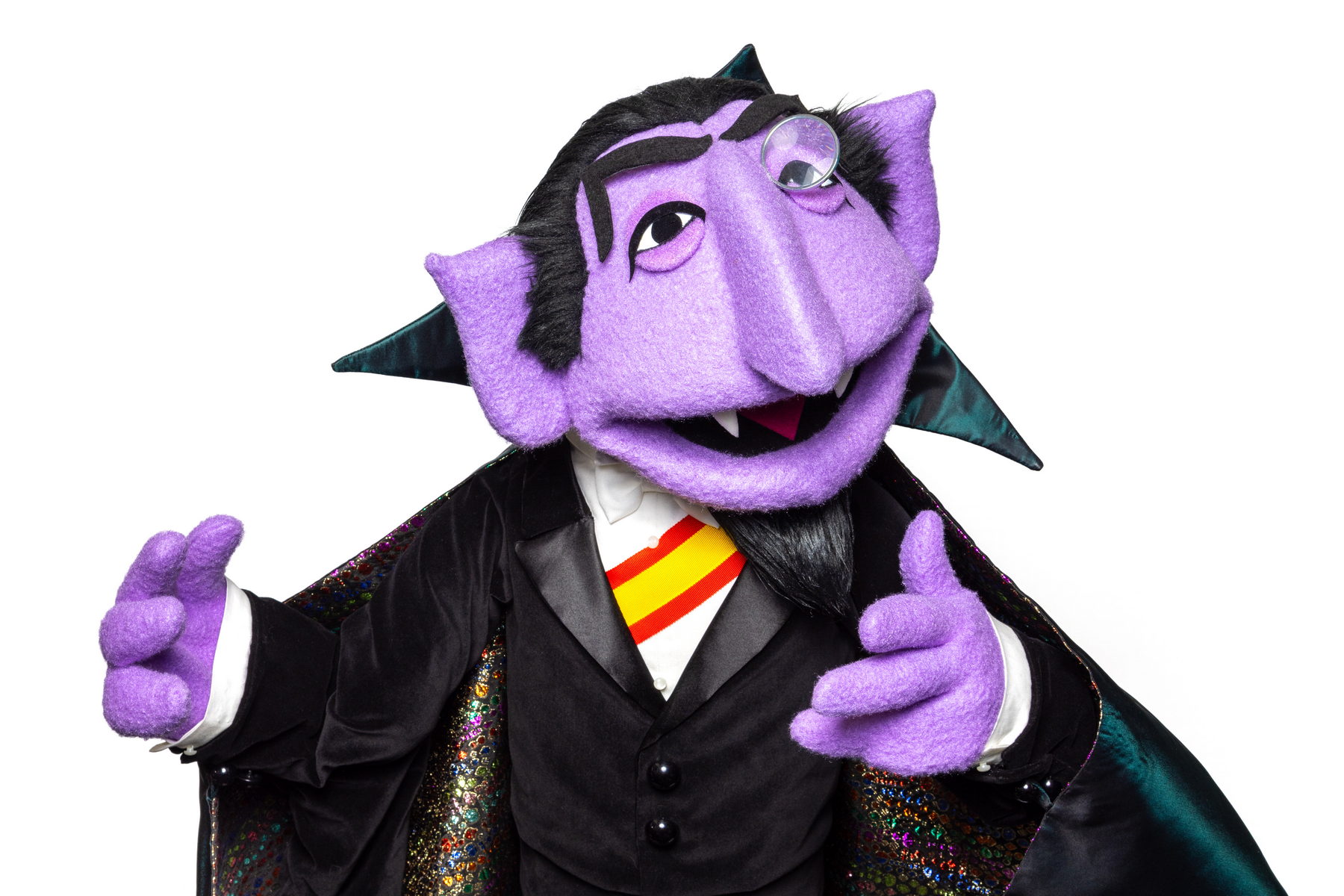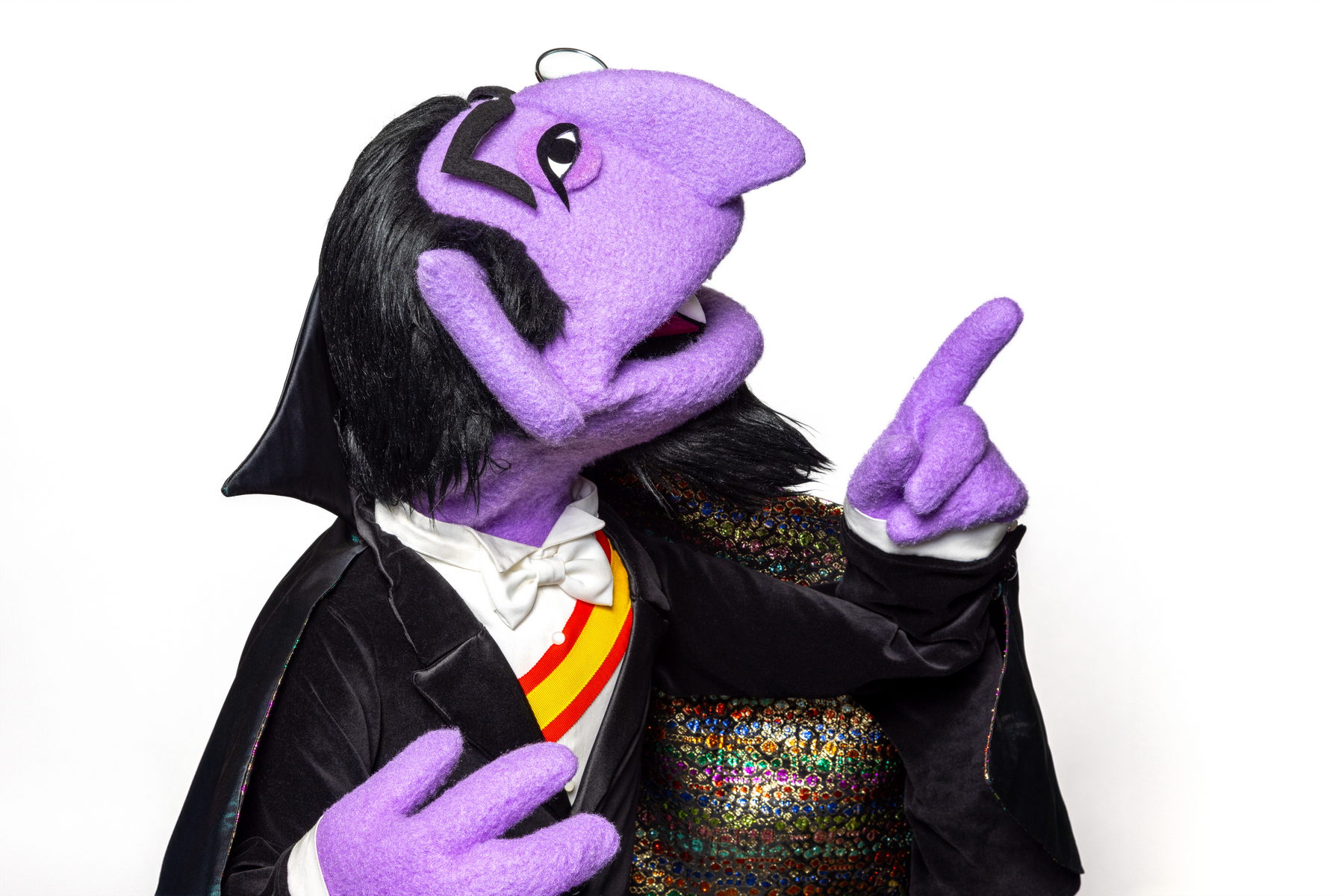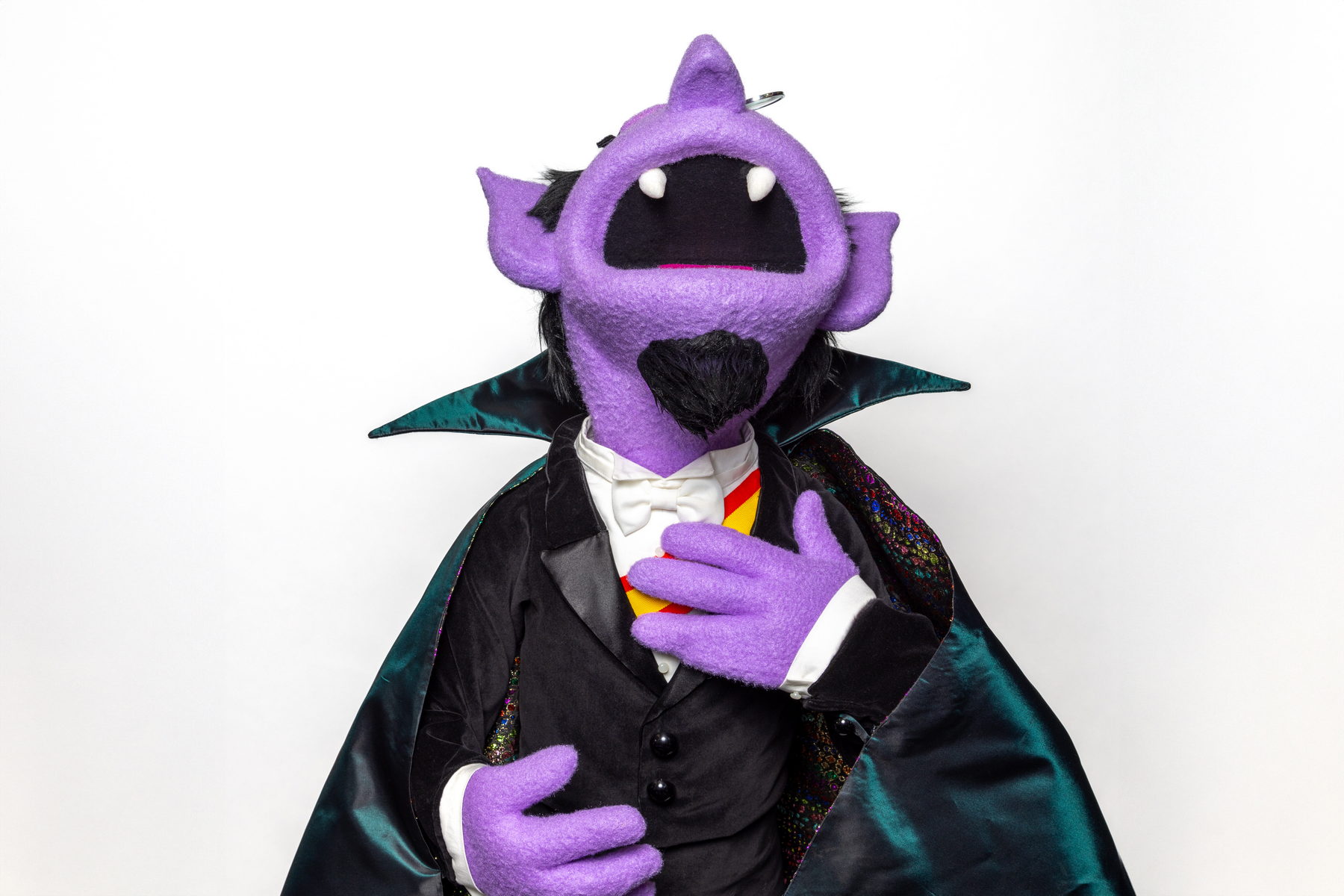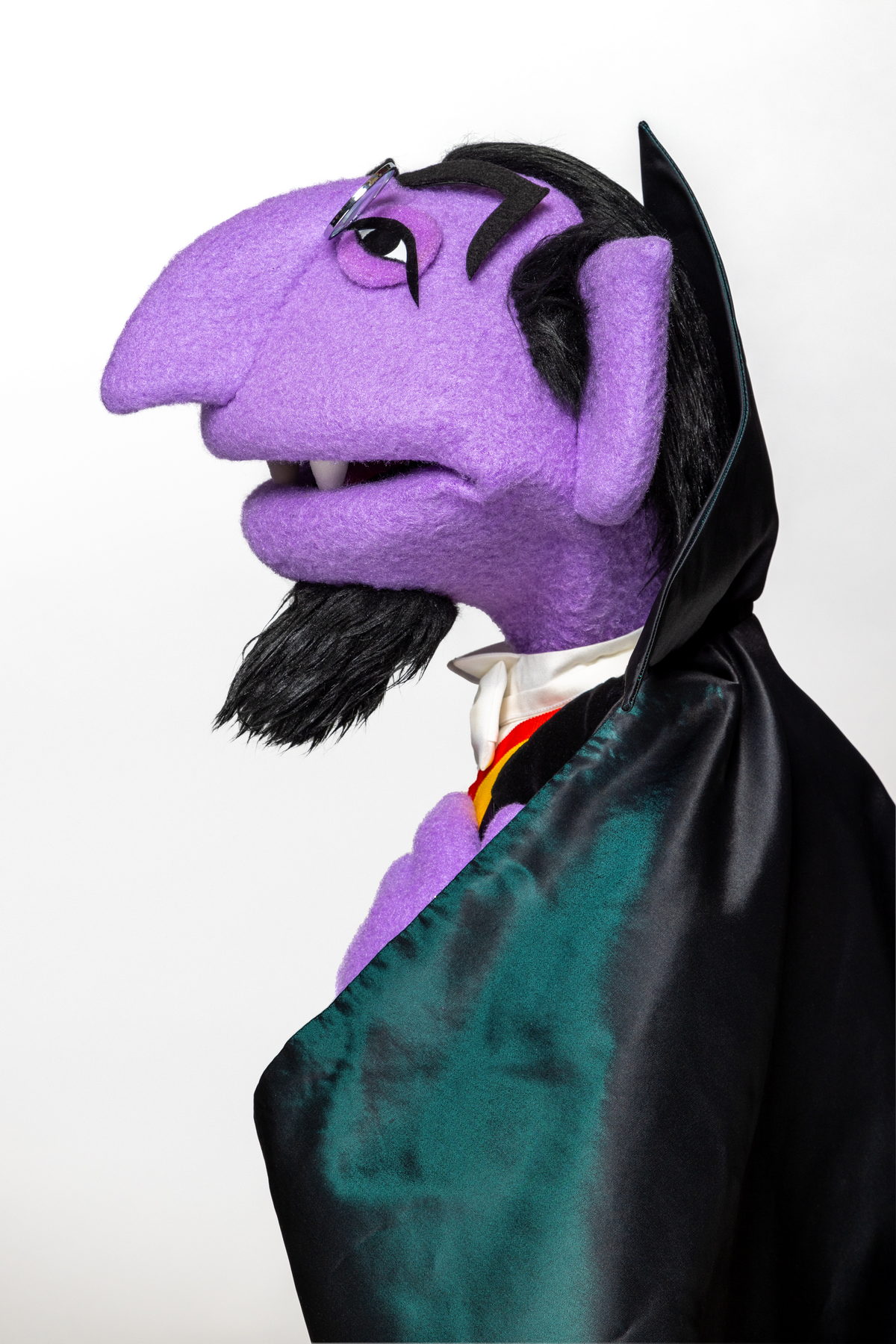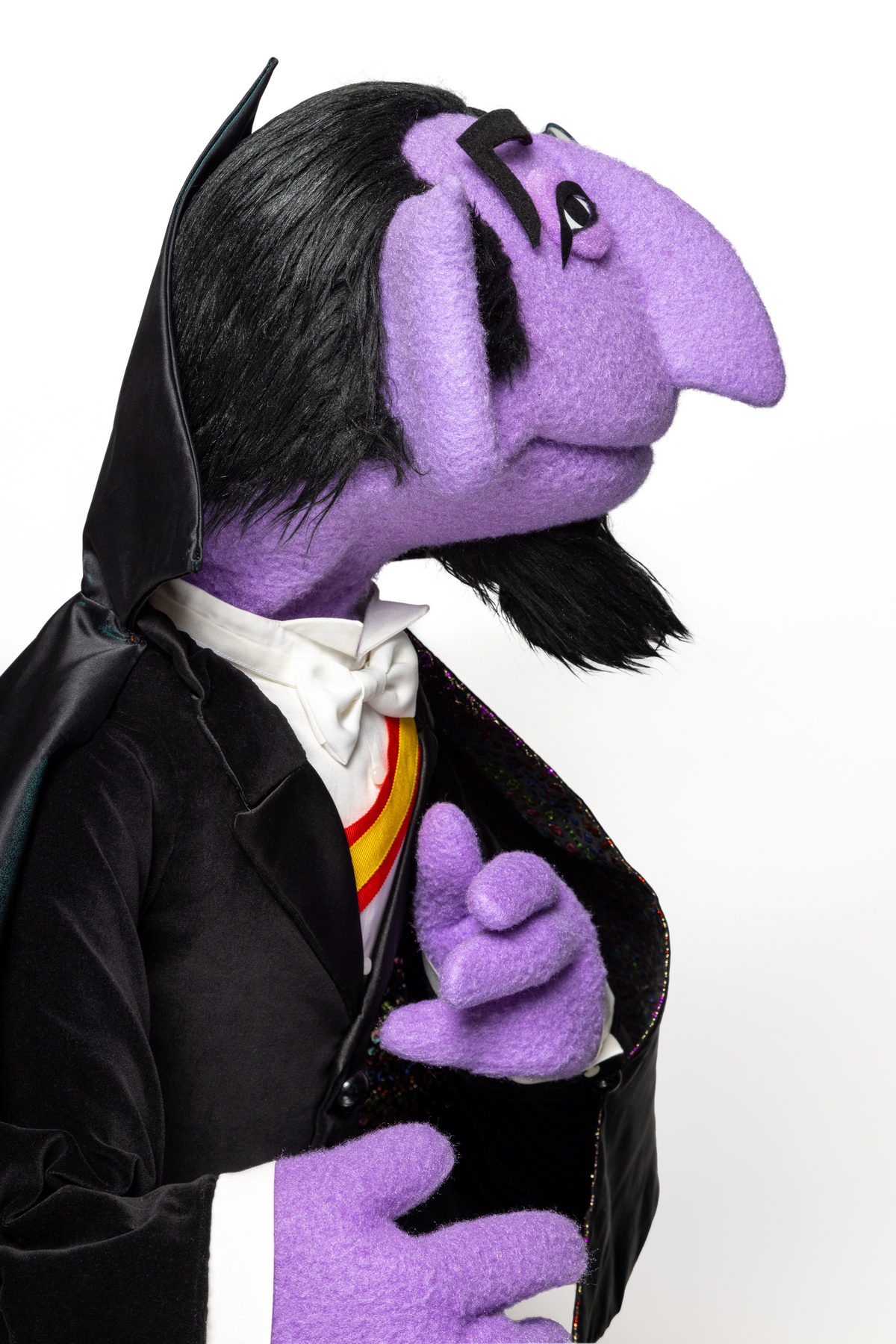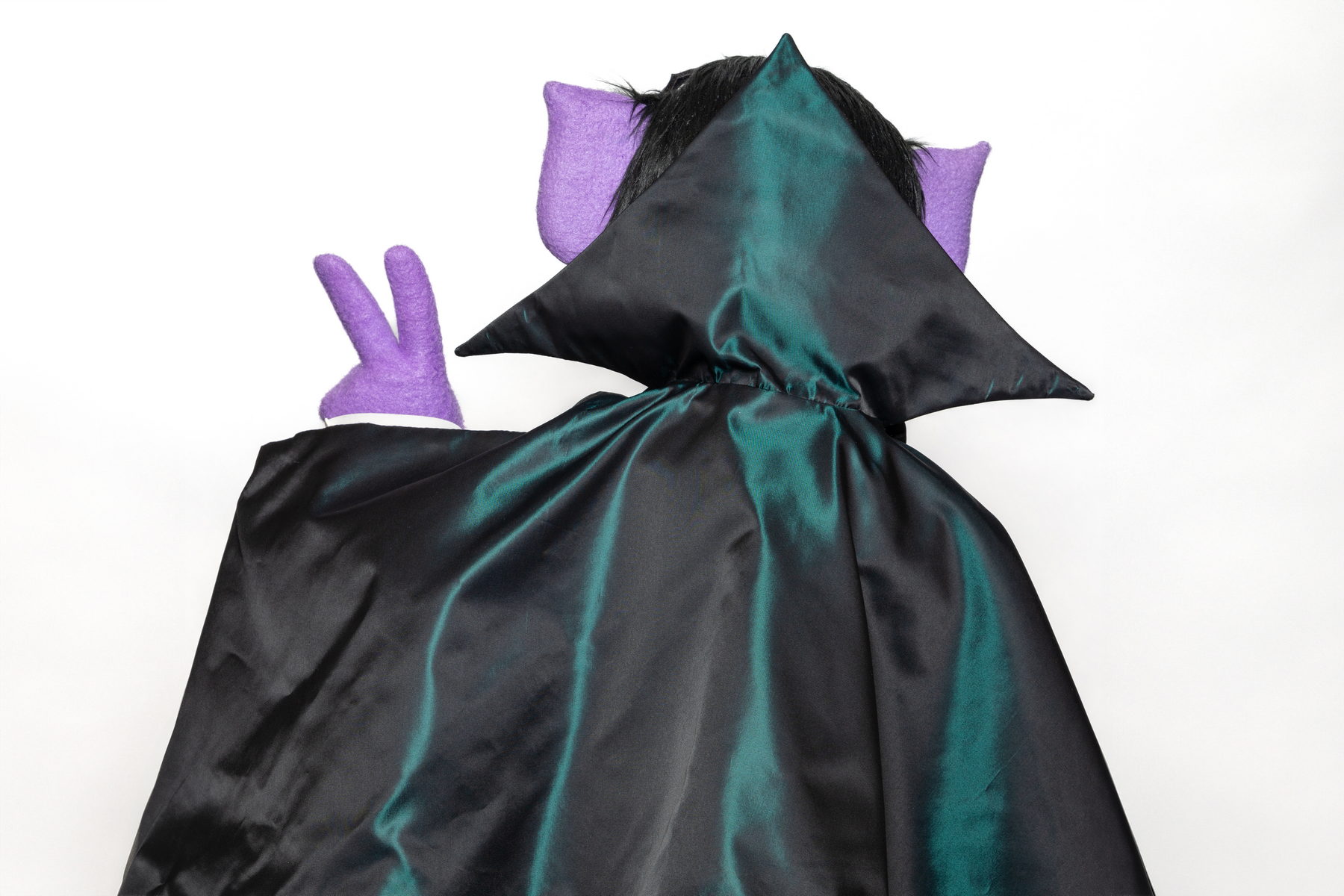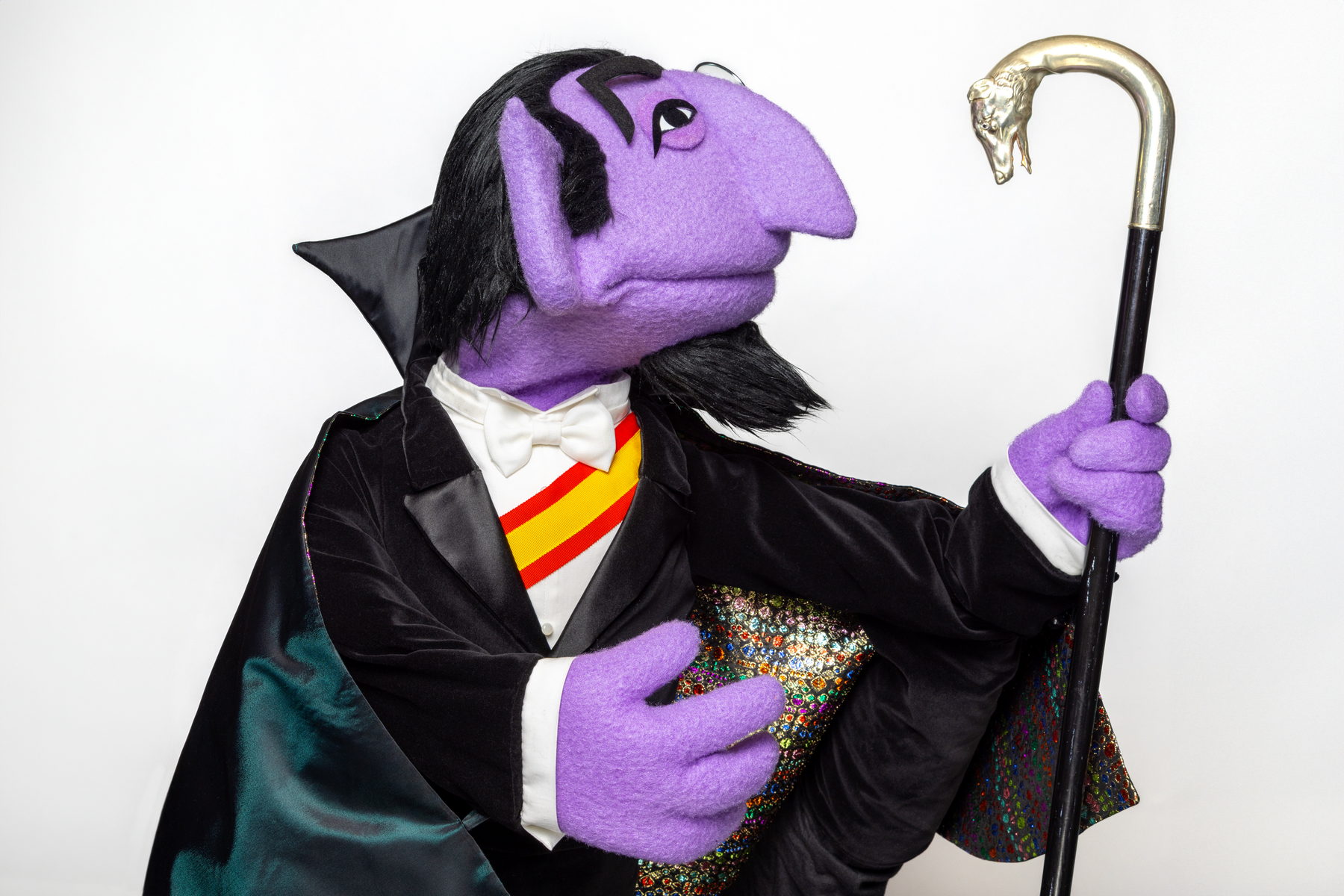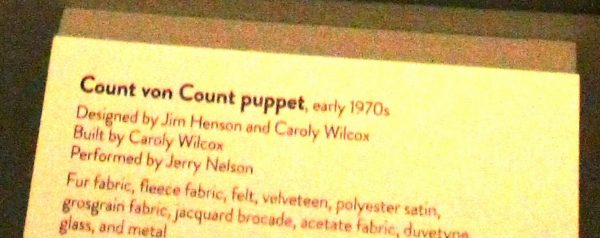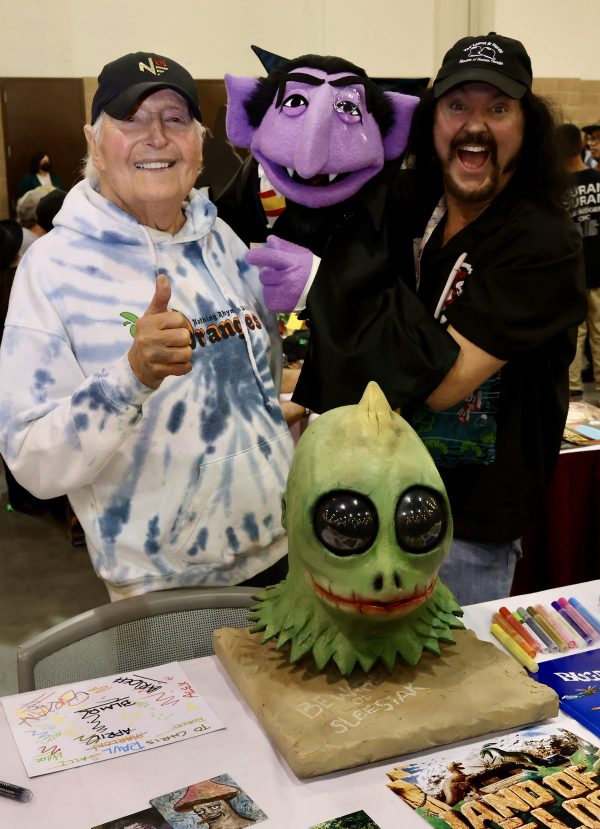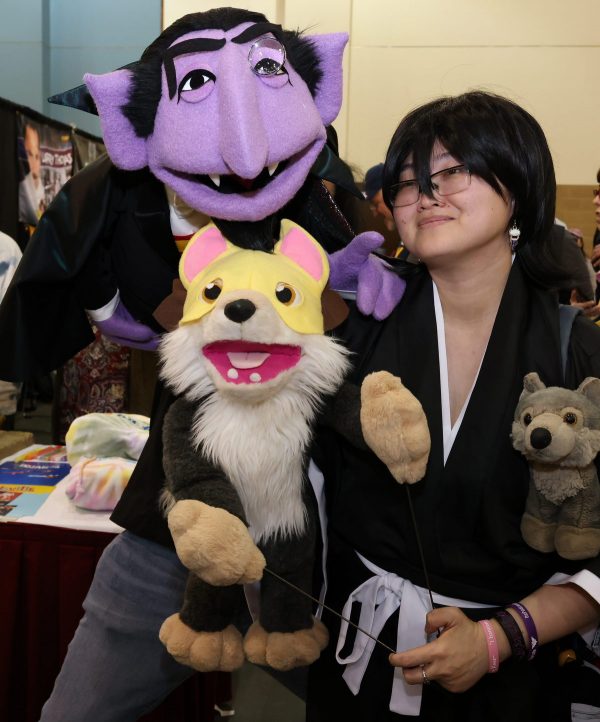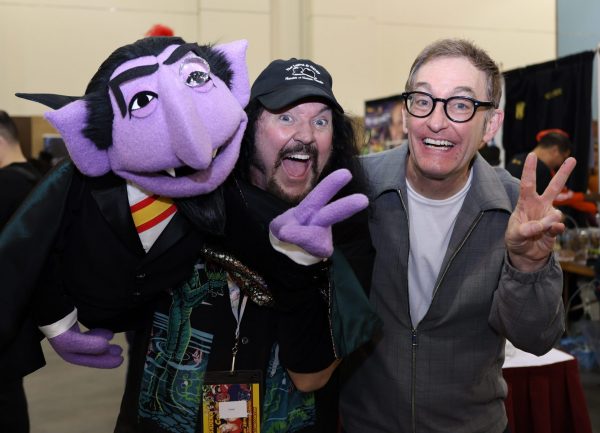Character: Count Von Count aka The Count
Hand type: Live hands
Builder credits:
Foam head construction – Steve Troop
Mouth plate fabrication – Wally Wingert
Fleece dying – Alex McGee; Alex In Wonderland
Ears, tongue, eyes, nose, monocle, eyebrows – Wally Wingert
Puppet head seamstress – Maggie Roberge
Hair and beard patterns – Wally Wingert
Costume and hands – Alex McGee; Alex In Wonderland
Foam body fabrication – Wally Wingert
Hair styling – Sergio Lopez
Fang sculpture – Drew Massey
Height: 25”
As this is most likely the last Muppet replica I’ll be making for the foreseeable future I wanted this project to be a “family affair,” with a lot of different artists and fabricators contributing to the final result. I feel that our team effort produced a wonderfully fun replica of one of “Sesame Street’s” most beloved characters.
I first discovered “Sesame Street” in its infancy , so I naturally gravitate towards the look of the show’s characters from the early 70’s. Though their style has changed considerably over the years, I am still drawn to that “classic” imagery. I prefer that my replicas are all fabricated to capture that early look.
The main thing I love about the Count’s debut style is the more “sinister” look of his eyes. The early eyelids are lower and cover a section of his pupils. Today, the Count has a more “bright-eyed” look with more of his pupils visible, which I feel diminishes his “creep factor.”
Another thing I like about the original Count is that his fangs are pointier. Today’s Count has fangs that are rounded, which unfortunately deemphasizes his wonderful vampiric image.
Also, his classic cape is a darker green with a more “bat-like” collar. Today’s Count has a brighter green cape with a triangular collar which I feel doesn’t look quite as striking.
Speaking of the cape, the early Count also had a stunning metallic brocade fabric for his cape lining. But this was replaced in the later years with a colorful matte finish fabric, which doesn’t look nearly as “aristocratic.”
Unlike other Muppets, the Count has “floating” eyebrows, which slightly hover above his forehead. The eyebrows of the “classic” Count were kept flatter against the head, while the modern Count has eyebrows that are more elevated. I’m not a fan of this new look, as the lighting casts a shadow on the Count’s head that makes it look like he has four eyebrows instead of two.
Materials: His tuxedo was constructed from black velvet with a black satin lapel. His cape is dark green/black acetate for the shell and collar, with colorful metallic brocade for the lining.
His shirt is made from white cotton fabric and the tie is a child’s bowtie. The sash was created from strips of grosgrain fabric.
When I saw the Count on display at the Skirball Center’s Henson exhibit several years ago, they posted a plaque which listed all of the fabrics used in the original. This was a huge help when shopping for fabrics.
We used this plaque as a guide when I went shopping at a legendary L.A. fabric store called International Silks and Woolens. My seamstress Maggie and I browsed the store and eventually found most every fabric we needed. However I wasn’t finding the right shade of dark green acetate for the cape. Just as I was getting discouraged, I happened to notice a roll of fabric sitting atop another group of fabrics that looked out of place.
Upon closer inspection, it ended up being the exact fabric that I’d been searching for. When I inquired as to why it wasn’t in its proper section with the rest of the acetates, the salesperson said a lady had just been in looking at it, and they hadn’t had a chance to replace it in its proper section. They said it was possible that the lady may be coming back in to purchase it. Upon hearing that, I bought the entire roll! This way I could have replacement fabric handy in case anything happens to his main cape.
The wires for his eyebrows and the monocle are all mounted on the inside of his nose. The nose is fabricated from a material called L200, which is flexible, but more durable and rigid than standard foam rubber. This material provided the strength needed to support the eyebrow wires and monocle.
After the bottom of the eyebrow wires were secured to the inside of the nose, black felt eyebrows were attached over the tops of the wires. Then the nose was hand-stitched to the face.
The eyelids of the early Count were made from felt, and were a slightly different color than the fleece used for his head. This set the eyes out nicely from the rest of his face. Today’s Count uses the same color fleece for his face and eyelids, and I don’t feel his eyes “pop” as much as they should. Though I didn’t use felt for the eyelids, and instead used fleece, I did want them to be a slightly different color for contrast purposes.
During the dyeing process, Alex McGee dyed some fleece called F3, some fleece called Fuzzelle, and some original Antron fleece a lavender color. Each fleece took to the dye differently, and we got slightly different shades from each fabric.
The F3 took on a slightly redder shade, so I used that for the eyelids so they would set the eyes apart from the Antron fleece that we used for his head and hands.
The head of the Count replica that’s pictured here is actually my second try. I wasn’t happy with the shape of the head from my first attempt, as I felt it wasn’t triangular enough. I contacted my pal Steve Troop, who’s been a professional puppet builder and performer for years, to see if he could build a better one than I did.
Steve noted that the Count’s head (which was originally built upon an Anything Muppet they call “Live Hands Lavender”) was a trapezoid shape. After several attempts Steve locked in on the perfect design and delivered a wonderful foam head for covering.
Another thing that sets this style of puppet apart from other Muppets, is that the foam rubber for his head and jaw are anchored to the TOP of his mouth plate, and not the underside. This was another obstacle that posed several fabrication problems, but Steve was able to conquer it nicely.
Since the Count is a “live hands” puppet, it’s necessary to have “elbow sleeves” to insert your hands into his. The original Count had elbow sleeves that were against his cape’s lining.
The modern Count has the elbow sleeves hidden between the lining and the shell of his cape to disguise them more. Though it’s an interesting idea I’m not a big fan of this look, as it looks too bulky. Also, there’s a noticeable separation between the shell and the lining at the bottom, and the look isn’t as “clean” as I’d like it.
However, one of the additions to the modern Count that I love are the little loops on the ends of his cape that fasten around the buttons on his tuxedo jacket. So when the Count spreads his arms the cape spreads with him. Like the fleece eyelids, that was another modern contrivance that I decided to incorporate into my replica.

